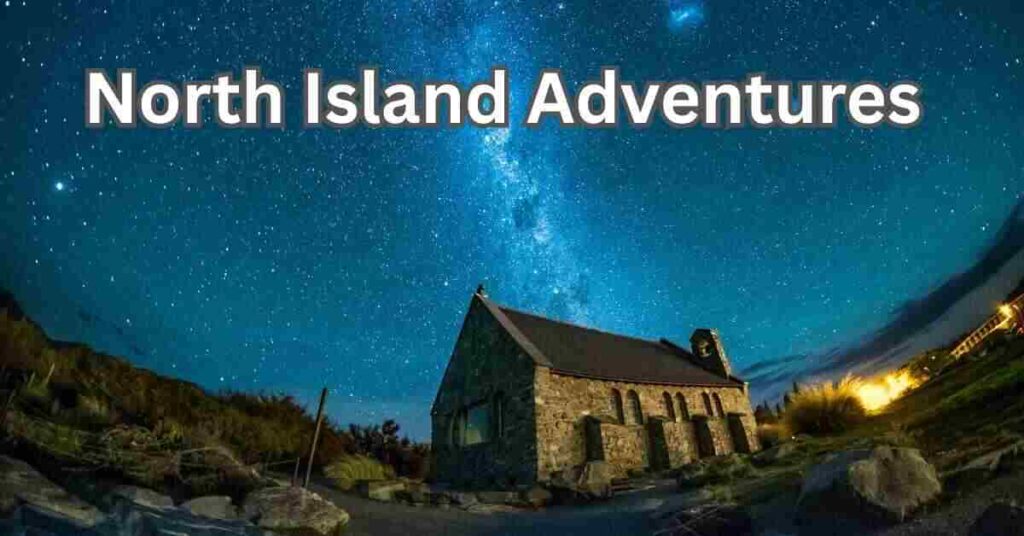New Zealand, also known as Aotearoa, is a traveler’s paradise, offering unparalleled natural beauty, cultural experiences, and adventure opportunities. Its two main islands, the North Island and the South Island, each hold distinct charms and unique attractions. While the North Island is famed for its geothermal wonders and Maori heritage, the South Island is celebrated for its dramatic landscapes and adrenaline-packed activities. This guide explores the highlights of both islands, providing insights into what makes each destination special and helping you plan an unforgettable New Zealand adventure.
North Island Adventures
The North Island is a haven for those seeking rich cultural experiences, geothermal landscapes, and vibrant urban life. Beginning your journey in Auckland, New Zealand’s largest city, you’ll find a mix of cosmopolitan energy and natural beauty. Known as the “City of Sails,” Auckland is a gateway to beaches, islands, and urban attractions. Spend time exploring the harbor area, including the Viaduct Basin, where waterfront dining meets lively nightlife. A short ferry ride leads to Waiheke Island, an oasis of vineyards and pristine shores. For panoramic views of the city, Mount Eden, a dormant volcano, offers a scenic hike that’s well worth the effort.
Rotorua is one of the North Island’s most distinctive destinations. Renowned for its geothermal activity, Rotorua is home to bubbling mud pools, erupting geysers, and soothing hot springs. Te Puia, a geothermal park, features the famous Pohutu geyser, which erupts multiple times daily, as well as traditional Maori carvings and workshops. Wai-O-Tapu showcases colorful geothermal phenomena, including the Champagne Pool and Artists’ Palette. Beyond its geothermal landscapes, Rotorua provides a cultural immersion with Maori performances and feasts, known as hangi, cooked underground using heated stones.

To experience coastal beauty, the Bay of Islands offers a subtropical retreat with sandy beaches, secluded coves, and turquoise waters. This region is ideal for water activities, including sailing, kayaking, and dolphin spotting. Historic towns such as Russell and Paihia provide charming bases for exploration. Cape Reinga, the northernmost point of the North Island, delivers stunning views of where the Tasman Sea and Pacific Ocean collide. This area holds spiritual significance to Maori culture, as it is believed to be the departure point for spirits traveling to the afterlife.
Wellington, New Zealand’s capital city, combines urban sophistication with natural charm. Located on a sparkling harbor and surrounded by hills, Wellington boasts a thriving arts scene, innovative cuisine, and fascinating museums. Te Papa Tongarewa, the Museum of New Zealand, offers interactive exhibits that explore the nation’s history, culture, and environment. Strolling through vibrant neighborhoods like Cuba Street or taking the Wellington Cable Car up to the Botanic Garden is a must. Film enthusiasts will appreciate visiting Weta Workshop, the studio behind the Lord of the Rings and Hobbit trilogies.
For those drawn to adventure, Tongariro National Park is a highlight of the North Island. This UNESCO World Heritage site is famous for its volcanic terrain and stunning hiking trails, including the Tongariro Alpine Crossing. Known as one of the world’s best day hikes, the trail leads past steaming craters, emerald lakes, and dramatic landscapes. Tongariro is also steeped in Maori mythology, offering both natural beauty and cultural significance.
The North Island captivates visitors with its geothermal wonders, cultural experiences, and accessible outdoor exploration. Its diversity makes it ideal for travelers seeking a combination of relaxation and adventure.
South Island Adventures
The South Island, often described as New Zealand’s wild and rugged counterpart, is a playground for nature lovers and adventure seekers alike. Starting in Christchurch, you’ll find a city that has transformed itself following devastating earthquakes. Christchurch blends history with innovation, featuring attractions such as the Canterbury Museum and the Transitional Cathedral, constructed entirely of cardboard. Stroll along the Avon River or explore the Botanic Gardens before embarking on your journey into the South Island’s dramatic landscapes.
Queenstown is the crown jewel for thrill-seekers visiting the South Island. Often referred to as the “Adventure Capital of the World,” Queenstown offers activities like bungee jumping, jet boating, and skydiving. Nestled beside Lake Wakatipu and framed by the Remarkables mountain range, the town combines adrenaline-pumping experiences with jaw-dropping scenery. Nearby Arrowtown provides a charming detour into New Zealand’s gold rush history, with preserved 19th-century buildings and scenic walking trails.
Fiordland National Park is undoubtedly one of the most spectacular regions in the South Island. Milford Sound, often described as the eighth wonder of the world, enchants visitors with towering cliffs, cascading waterfalls, and serene waters. Boat cruises or kayaking through the fjord allow travelers to appreciate its grandeur while spotting seals, dolphins, and even penguins. Doubtful Sound, less crowded but equally majestic, offers a quieter alternative to Milford. The region is a must-visit for its sheer scale and beauty.
For those drawn to alpine adventures, Aoraki/Mount Cook National Park is home to New Zealand’s highest peak, Aoraki (Mount Cook), and a network of hiking trails surrounded by glaciers and mountain vistas. The Hooker Valley Track is a popular route that leads to views of glacier-fed lakes and snow-covered summits. Stargazing at Lake Tekapo’s Mount John Observatory is a magical experience, as the area is part of an International Dark Sky Reserve.
Abel Tasman National Park, located at the northern tip of the South Island, offers golden beaches, crystal-clear waters, and lush forests. The park is perfect for kayaking, swimming, and hiking, with trails that showcase coastal views and untouched nature. Abel Tasman’s sunny climate and accessibility make it a favorite for travelers seeking relaxation and outdoor exploration.
Further south, Dunedin and the Otago Peninsula combine historical charm with wildlife encounters. Dunedin is known for its well-preserved Victorian architecture and links to Scottish heritage. The Otago Peninsula, meanwhile, provides opportunities to see seals, penguins, and albatross in their natural habitats. A visit to Larnach Castle, New Zealand’s only castle, offers a glimpse into the region’s history and grandeur.
The South Island’s dramatic landscapes and adventure-packed activities make it the ultimate destination for thrill-seekers and nature enthusiasts. Whether you’re exploring fjords, glaciers, or golden beaches, the island promises unforgettable experiences.
Choosing Between the Islands
Deciding between the North Island and South Island depends on your travel preferences. If you’re intrigued by geothermal phenomena, Maori culture, and lively cities, the North Island is ideal. Its warmer climate and shorter travel distances make it accessible and family-friendly. Rotorua’s bubbling mud pools and Wellington’s creative energy are perfect for those seeking unique experiences combined with urban comforts.
The South Island, on the other hand, is tailored for travelers who crave solitude, dramatic scenery, and thrilling activities. From Queenstown’s adventure sports to Fiordland’s serene fjords, the South Island offers unparalleled opportunities to connect with nature. Its expansive landscapes and remote beauty make it the perfect destination for explorers seeking awe-inspiring vistas.
Essential Tips for Traveling New Zealand
A self-drive itinerary is the best way to experience New Zealand, allowing you the freedom to explore both islands at your own pace. Renting a car or campervan is essential, as public transport options are limited. Be prepared for varying weather conditions; pack layers and waterproof gear for the South Island’s colder climate and lighter clothing for the North Island’s temperate zones.
Book accommodations and activities in advance, especially during peak season (November to March), when demand is high. Familiarize yourself with local driving rules, including navigating narrow roads and one-lane bridges. Respect New Zealand’s natural beauty by following Leave No Trace principles and staying on marked trails to protect fragile ecosystems.
New Zealand’s North and South Islands each offer distinct adventures and experiences, making it a destination that caters to diverse interests. The North Island’s geothermal landscapes and Maori culture provide rich opportunities for exploration and learning, while the South Island’s fjords, glaciers, and adrenaline-packed activities are perfect for nature lovers and thrill-seekers. Choosing between the islands is a challenge, but either way, you’ll embark on a journey filled with wonder and discovery. Whether soaking in Rotorua’s hot springs or hiking the Hooker Valley Track, New Zealand promises an unforgettable travel experience.
